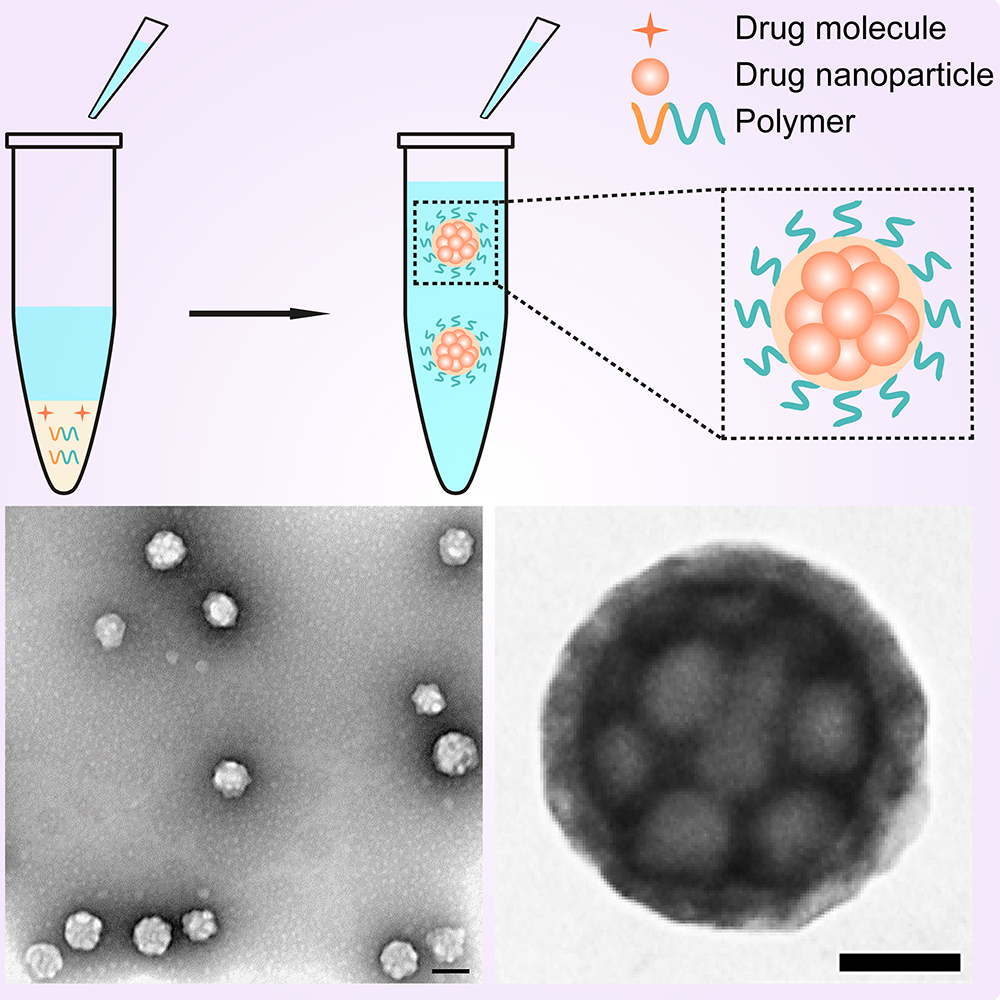AIBN researchers have developed a new way to produce nanoparticles that carry much higher drug concentrations.
The discovery represents an important step toward the development of new cancer nanomedicines that can achieve enhanced therapeutic effects and improved safety.
Many cancer chemotherapeutics are poorly water-soluble. This is true for many cytotoxic drugs that have been in clinical use for decades – including paclitaxel, docetaxel and campothecin – as well as for the next generation of targeted therapeutics such as small molecule kinase inhibitors.
- Hard nanoparticles can enter cancer cells better than ‘squishy’
- Gold nanoparticles detect signals from cancer cells
The drug paclitaxel, for example, is very hydrophobic – it doesn’t dissolve in water. This causes problems when it comes to administering the drug, explains AIBN researcher Associate Professor Chun-Xia Zhao.
“It’s hard to inject into the bloodstream,” she said. “To get around this, paclitaxel is dissolved in a solvent such as castor oil and ethanol to make Taxol.”
Reduction of side effects to cancer medicine
The oil and ethanol formulation enables clinicians to administer the drug by infusion, but the process can take hours. Moreover, castor oil and ethanol are themselves toxic in the bloodstream, so they cause additional side-effects.
 Associate Professor Zhao and her team at AIBN are investigating the possibility of using nanoparticles to deliver paclitaxel as nanomedicine. If successful, this approach would substantially reduce side effects and improve targeting efficiency, as well as avoid the need for toxic solvents.
Associate Professor Zhao and her team at AIBN are investigating the possibility of using nanoparticles to deliver paclitaxel as nanomedicine. If successful, this approach would substantially reduce side effects and improve targeting efficiency, as well as avoid the need for toxic solvents.
Polymer nanomedicines are attractive as many polymers have been approved for clinical applications.
“You can only get up to 5 per cent of drug into the particle – so 95 per cent of your formulation is the polymer, not the drug,” Associate Professor Zhao said.
“You need trillions of these nanoparticles in order to reach the therapeutic window.”
To address this, Associate Professor Zhao, Dr Yun (Amy) Liu and their colleagues came up with a new way to build a medicine-filled polymer nanoparticle, using a process called sequential nanoprecipitation.
New approach needs fewer nanoparticles
The trick lies in building the nanoparticle shell around nano-sized drug particles. When undertaken with the right timing and under the right conditions, the polymer coat forms around the drug particles.
“Essentially, you’re building a container around the cargo, rather than trying to put cargo into a pre-built container.”
“The new technology we created enables us to build nanoparticles that are up to 65 per cent cargo, so you need fewer nanoparticles,” Associate Professor Zhao said.
“It means you can increase the dose while decreasing side-effects.”
The nanoparticles built in this way are also very stable and can be formulated into a powder with a very long shelf-life.
“This technology offers a new strategy for the manufacture of nanoparticles with high drug loading and opens unique opportunities for drug delivery applications.”
The findings have been published in the journal Angewandte Chemie.
UQ’s technology transfer company UniQuest has filed a patent application and licensed the technology to Yunnan XunBo Medical Technology, who are developing formulations for some key drugs in the local Chinese market.



